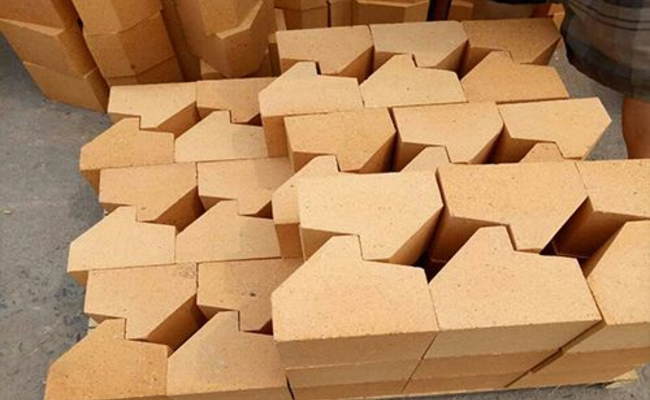
Pelet keramik adalah bahan berpori bulat yang terbuat dari tanah liat titik leleh rendah, serpih, fly ash, atau gangue batubara sebagai bahan baku dengan kalsinasi
Tujuan utama dari isolasi bahan refraktori yang terbuat dari refraktori pengisolasi panas adalah untuk mengurangi disipasi panas di tungku suhu tinggi, Kurangi bobot diri dari kiln, dan mengurangi suhu eksterior kiln. Refraktori isolasi sangat penting dalam posisi kiln suhu tinggi dan umumnya digunakan bersama dengan refraktori berat untuk membentuk struktur komposit multi-lapisan yang secara efektif meningkatkan masa pakai kiln, sementara juga menghemat energi dan melindungi lingkungan.
Bola berongga dibuat oleh bahan baku leleh seperti alumina atau zirkonia menjadi bentuk cair dan meniup cairan cair suhu tinggi menjadi tetesan kecil dengan udara terkompresi, membentuk bidang berongga di bawah aksi tegangan permukaan dan gaya sentrifugal. Bahan umum termasuk bidang alumina hollow, Zirconia Hollow Spheres, dll.. Bahan -bahan ini banyak digunakan dalam bahan refraktori dan dapat digunakan untuk menghasilkan Batu bata berlubang dan isolasi castable. Karena kemurnian yang tinggi, Konten pengotor rendah, kekuatan tinggi, dan konduktivitas termal rendah dari bola berlubang material ini, Mereka umumnya digunakan dalam produksi bahan isolasi bermutu tinggi dengan kinerja suhu tinggi dan kinerja isolasi, dan juga bisa berhubungan langsung dengan api.
Manik -manik melayang adalah microbead berongga abu terbang yang dapat mengapung di permukaan air, terpisah dari abu batubara yang dikeluarkan dari tungku batubara bubuk yang terbakar, kebanyakan tidak putih. Komposisi kimia manik -manik drift sangat berfluktuasi, yang terkait erat dengan komposisi batubara lebah. Ukuran partikel biasanya antara 20 ~ 250μm, Luas permukaan spesifik adalah 3000 ~ 3200cm2/g, dan kepadatan curah umumnya 250 ~ 400kg/m3. manik -manik drifting umumnya digunakan dalam isolasi castable, dan tujuan memperkenalkannya terutama untuk meningkatkan kekuatan dan mengurangi konduktivitas termal dari isolasi yang dapat dikeluarkan karena kekuatan tekanan silinder yang lebih besar dan konduktivitas termal yang lebih rendah.
Bumi diatom adalah sejenis batuan sedimen yang silika dengan asal biologis. Ukuran shell diatom adalah sekitar 5-400μm, mengandung sejumlah besar pori -pori kecil, dan porositasnya mencapai lebih dari 80%, Jadi memiliki kinerja isolasi panas yang sangat baik. Kepadatan curah adalah kriteria penting untuk mengukur kualitas tanah diatomous, Semakin kecil kepadatan curah, semakin baik kualitasnya. Bumi diatom biasanya digunakan dalam produksi ubin tanah diatomous, yang memiliki sifat isolasi termal yang baik, tetapi suhu penggunaan tidak lebih tinggi dari 900 ℃, jika tidak, Silika di tanah diatom akan diubah menjadi kuarsa persegi dan kehilangan sifat isolasi termal. Selain itu, diatomit juga digunakan sebagai pengisi dalam bahan tidak teratur.
Perlite adalah lava asam dari letusan gunung berapi, yang mengembang di 1.180-1350 ℃, membentuk perlit yang diperluas kaya akan pori -pori tertutup dan terbuka, dengan ekspansi kelipatan 7-30 kali atau lebih. Perlite yang diperluas kecil, umumnya, antara 40-200kg/m3, konduktivitas termal sangat rendah, Suhu penggunaan yang aman ada di bawah 800 ℃, dan memiliki tingkat sifat refraktori tertentu. Karena itu, Perlite yang diperluas digunakan sejumlah besar bahan refraktori isolasi, Jumlah dalam isolasi castable sangat besar, terutama untuk mengurangi konduktivitas termal bahan isolasi, Sementara blok perlit yang diperluas dapat memberikan kekuatan tertentu, banyak digunakan dalam insulasi industri petrokimia dan isolasi pipa. Selain itu, juga menggunakan perlite yang diperluas untuk membuat beberapa produk stereotip.
Pelet keramik adalah bahan berpori bulat yang terbuat dari tanah liat titik leleh rendah, serpih, fly ash, atau gangue batubara sebagai bahan baku dengan kalsinasi. Ini memiliki permukaan yang halus dan keras, Bentuk sarang lebah di dalamnya, konduktivitas termal yang rendah, dan kekuatan tinggi, Ini adalah bahan baku ringan buatan berkualitas tinggi, terutama digunakan sebagai agregat dalam isolasi termal dan castable refraktori.
Vermiculite adalah mineral silikat berlapis khas yang terdiri dari mika hitam, mika emas, dan mineral lainnya, dan komposisi kimianya berfluktuasi secara luas, terutama tergantung pada komposisi mika. Vermiculite memiliki karakteristik pemanasan dan berkembang, yang membuatnya digunakan di bidang bahan refraktori. Vermiculite mulai berkembang dalam volume saat dipanaskan hingga 200 ° C, dan berat volume menurun ke antara 600 Dan 900 kg/m3, dan berat volume dapat dikurangi menjadi 100-130 kg/m setelah kauterisasi lengkap, dan konduktivitas termal juga sangat kecil, memiliki sifat isolasi termal yang baik. Vermiculite dapat digunakan pada suhu maksimum 1100 ° C, sehingga dapat diperkenalkan dalam bentuk butiran atau bubuk halus dan dibuat menjadi batu bata vermiculite atau insulasi termal castable untuk digunakan dalam beberapa bagian dengan suhu yang sedikit lebih tinggi.
Sejak Oktober, harga alumina terus meningkat, and China's largest bauxite importer - a…
Pertama, Bata Alumina Tinggi: The Leader In High Temperature Refractories As a leader in high-temperature…
The application of refractory bricks in the kiln immediately endangers the operation rate of the…
Analysis Of The Causes Of Common Quality Problems In Tunnel Kiln Construction And Measures To…
Corundum quality refractory castables are made from corundum to the new jade refractory insulation material…
Analisa Bahan Baku Tahan Api Aluminium-Silikon Prof. Li Yong of the University of Science and…